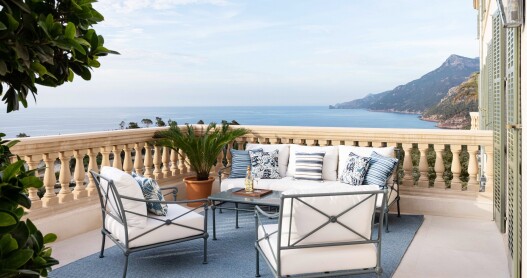Overview
When’s the best time to go to Spain?
Spain is sunny almost year-round—excepting the green northern region of Galicia—but that doesn’t necessarily mean it is warm! Wear layered clothing; a scarf is a good idea in every season except summer. Check calendar dates to make sure you’re not arriving on a feria, or holiday weekend, most of which are in spring and winter. On these festival weekends, hotel rooms are difficult to get and prices go sky-high if you haven’t planned in advance.
How to get around Spain
Madrid and Barcelona are both well-connected international airports served by the metro. A plethora of taxis is always waiting outside. Upon arrival, use your card at an ATM in the airport to save on conversion fees and hit the town with the correct currency.
One of the best and fastest railways in Europe, the AVE train connects Barcelona to Madrid in a mere 2.5 hours; nothing is out of reach. The buses are also well-priced, comfortable, and have free Wi-Fi (pronounced wee-fee here). Car rentals are readily available, though prepare to pay somewhat hefty tolls on highways (autovías) and to park on windy, narrow streets, as many small cities don’t allow cars in the center. Domestic flights are inexpensive via RyanAir, EasyJet, and Iberia airlines.
Food and drink to try in Spain
Be courageous! Spanish cuisine is a delight for all the senses, and the best treats go to the bravest. From roast suckling pig to blood sausage, and oxtail to percebes (barnacles), diners can discover sensations and delicacies they’ve only dreamed of. The tradition of tapas (appetizer-sized portions) and raciones (dishes for two) is still alive, and this way one can try many things without filling up. Accompanying sips couldn’t be better: Spain boasts the delicious riojas, ruedas, riberas, and a whole host of other world-famous wines. Skip the sangria in restaurants, as it’s only for tourists. At the end of your meal, leave the loose change rounding up to a euro or two; at a very nice establishment, 10 percent of the bill is perfectly appropriate.
Culture in Spain
A proud people, Spaniards celebrate a history that is long and full of lore. Monuments to Christopher Columbus (here called Colón), the royal families, and conquerors are plentiful and adorn the streets. Food, art, wine, and nightlife are the essence of Spain. Be prepared to stay out a little later than normal, as the country really comes alive after dark. Soccer (fútbol) is very nearly a religion in Spain, with the favorites being Barcelona, Real Madrid, and Atlético Madrid. If you’re walking down a street and car horns are blaring, people are screaming, and flags are waving—don’t worry, it’s likely just the scoring of a goal.
Spain loves to party! Any excuse for a long weekend is taken, and many of these fall in the spring or during Christmastime. Holy Week (Semana Santa) and Three Kings Day are major national festivals, while many communities celebrate their own traditions such as the infamous Running of the Bulls, Las Fallas, and San Isidro festivals.
Local travel tips for Spain
The concept of siesta is alive and well. Most shops (except El Corte Ingles) will close each day from 2 to 5 p.m. to allow the staff a long, proper Spanish lunch and rest. Europe in general is more chic than the States; dress appropriately and you’ll have an easier time blending in. Spain has a low level of English relative to Europe, so bring that phrasebook or app to facilitate conversations; after all, the best places don’t have English signage! Most of all, “Disfruta la vida Española”—enjoy the Spanish life!
Guide Editor
Brandy Bell is a travel writer currently living in Madrid, Spain, where she dabbles in everything from nunchucks and hula hooping to street art. She is on a quest to build a recycled cello, perfect a French accent, and is currently planning a trip to South Africa where she hopes to skin dive with Great Whites. Follow her journey at Itsoneworldtravel.com.















